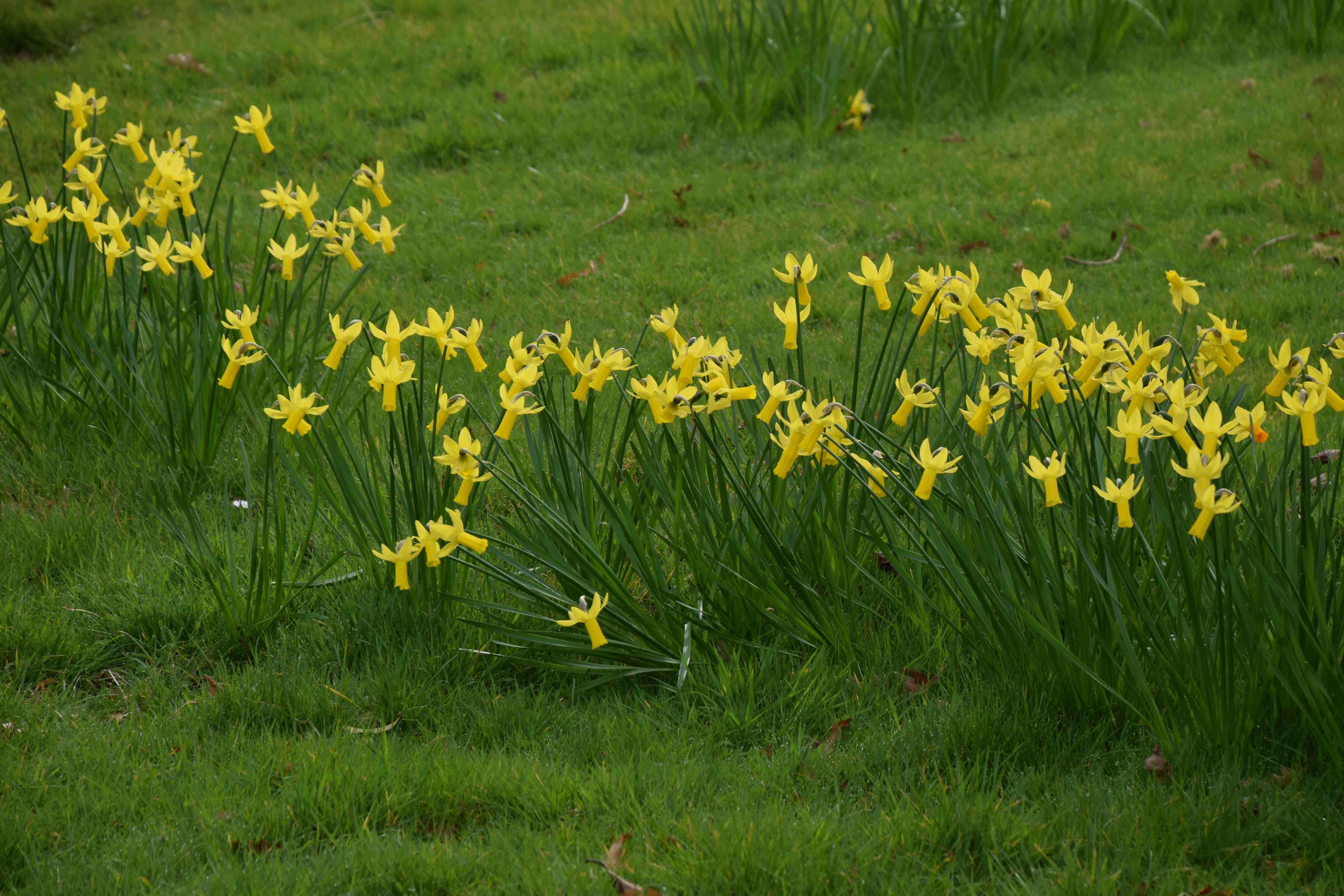
Now the ground is moistened by autumn rains and temperatures are dropping it is time to think about planting bulbs for spring colour. Of all the different bulbs we can grow, daffodils are possibly the best value because they should live and bloom for many years, producing more flowers each season.
There are daffodils for every garden and taste and not all are yellow. With careful selection you can have daffodils in bloom from February to early May.
It is just a matter of taste but I prefer simple daffodils for naturalising in grass. Although the large, doubles are beautiful in their own way I plant these in pots and in the border and don’t like them in grass where they look rather out of place. When planting in grass I prefer to plant one kind or interlocking drifts of two or three kinds rather than a mix. Bags of naturalising mixes are inexpensive but they give a rather spotty effect and are not for me.
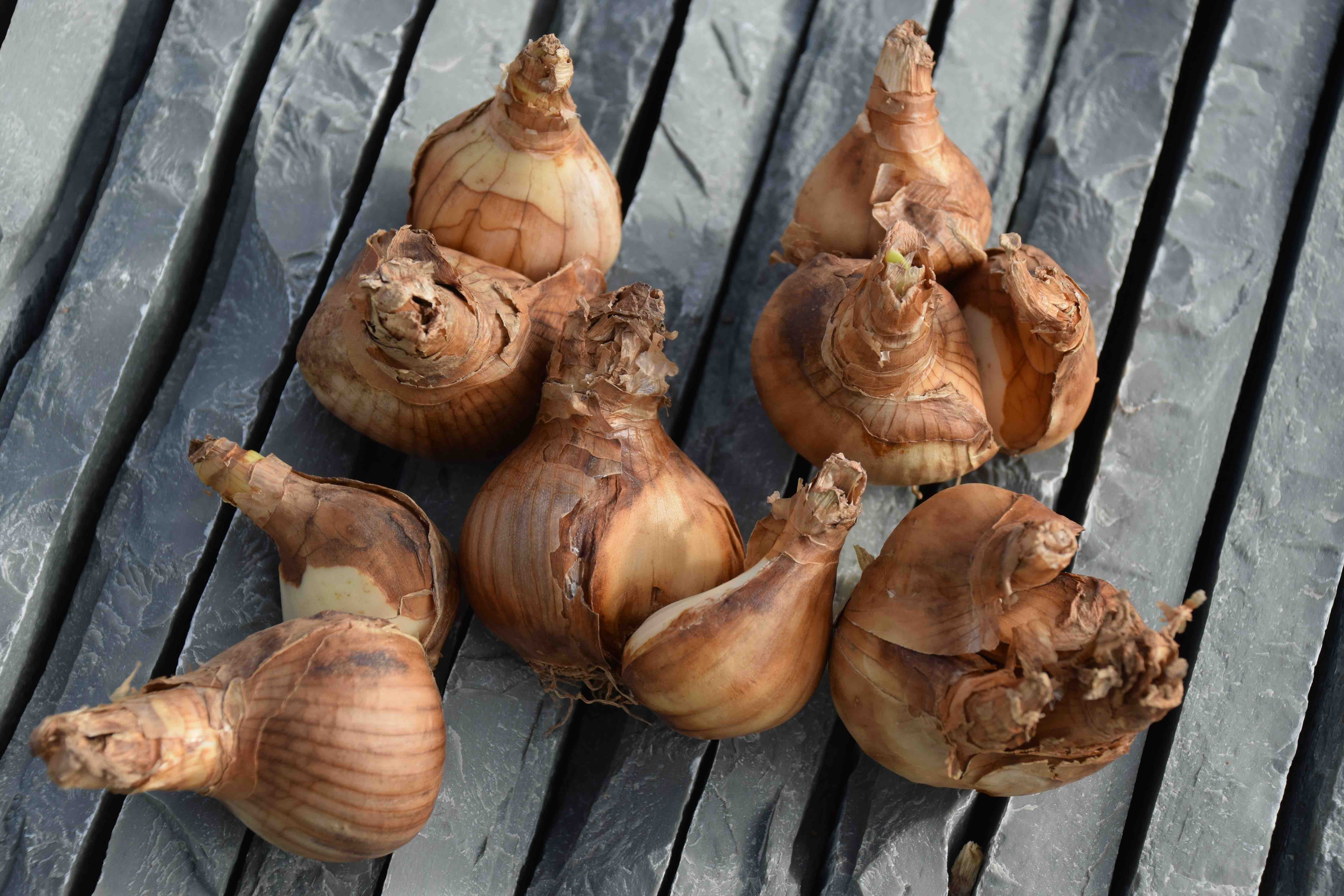
When you buy your bulbs they may have offsets, like the bulbs above. Although different varieties have bulbs of various sizes and dwarf daffodils usually have small bulbs, the size of a bulb matters. The large, rounded bulbs above will produce the best flowers and the smaller bulbs may not bloom next spring or the flowers will be small. So when planting in pots, where I want maximum colour, I carefully break off the side bulbs and plant these in the garden and use the largest for the pots. When planting in grass I also plant them separately because it is not easy to divide the bulbs once planted. In the soil the small bulbs will grow and bloom the next year.
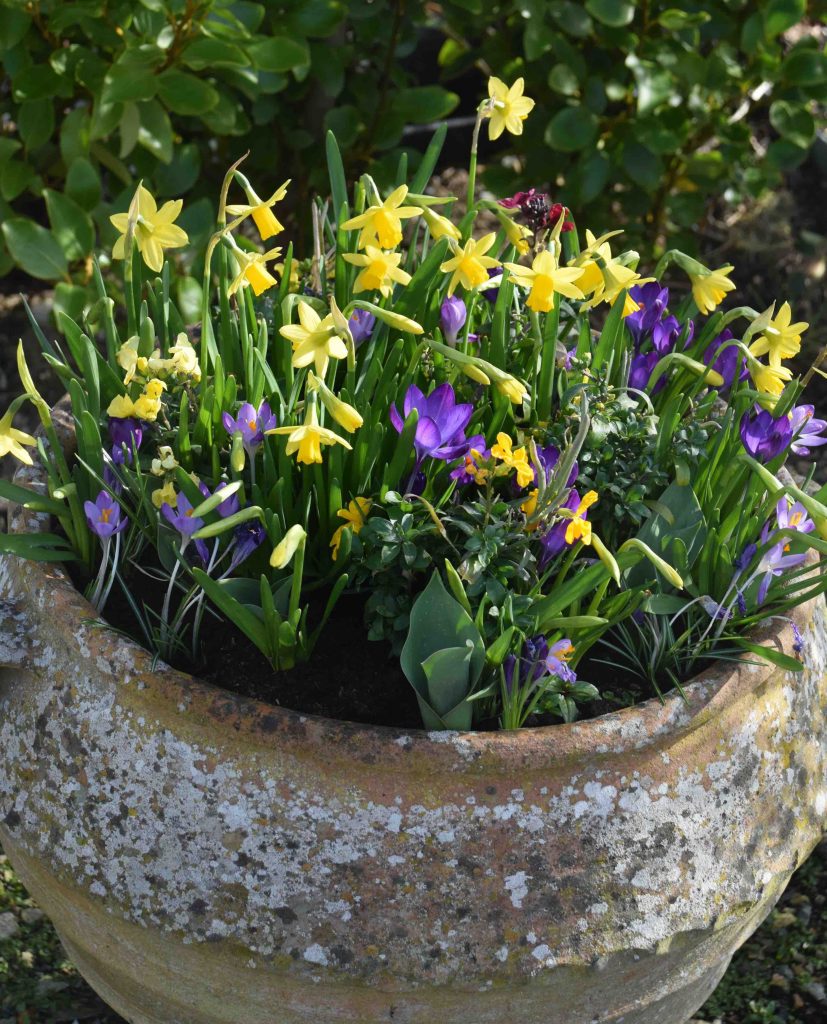
The most popular and cheapest daffodil is ‘Tête-à-tête’. This is because it is a vigorous grower and always delights. I buy some every year and tend to plant them in pots, above with crocus and later-flowering tulips, and then put them in the garden where they thrive. ‘Tête-à-tête’ is dwarf so perfect for pots but also ideal for planting in grass because it blooms early so the foliage can be cut down, along with the grass, by late May, so is not a nuisance.
A recent variation of ‘Tête-à-tête’ is ‘Tête Boucle’ which is a double-flowered form. It is just as easy and has delightful frilly flowers. My bulbs were planted out after their first year in a pot and have done just as well as the regular ‘Tête-à-tête’.
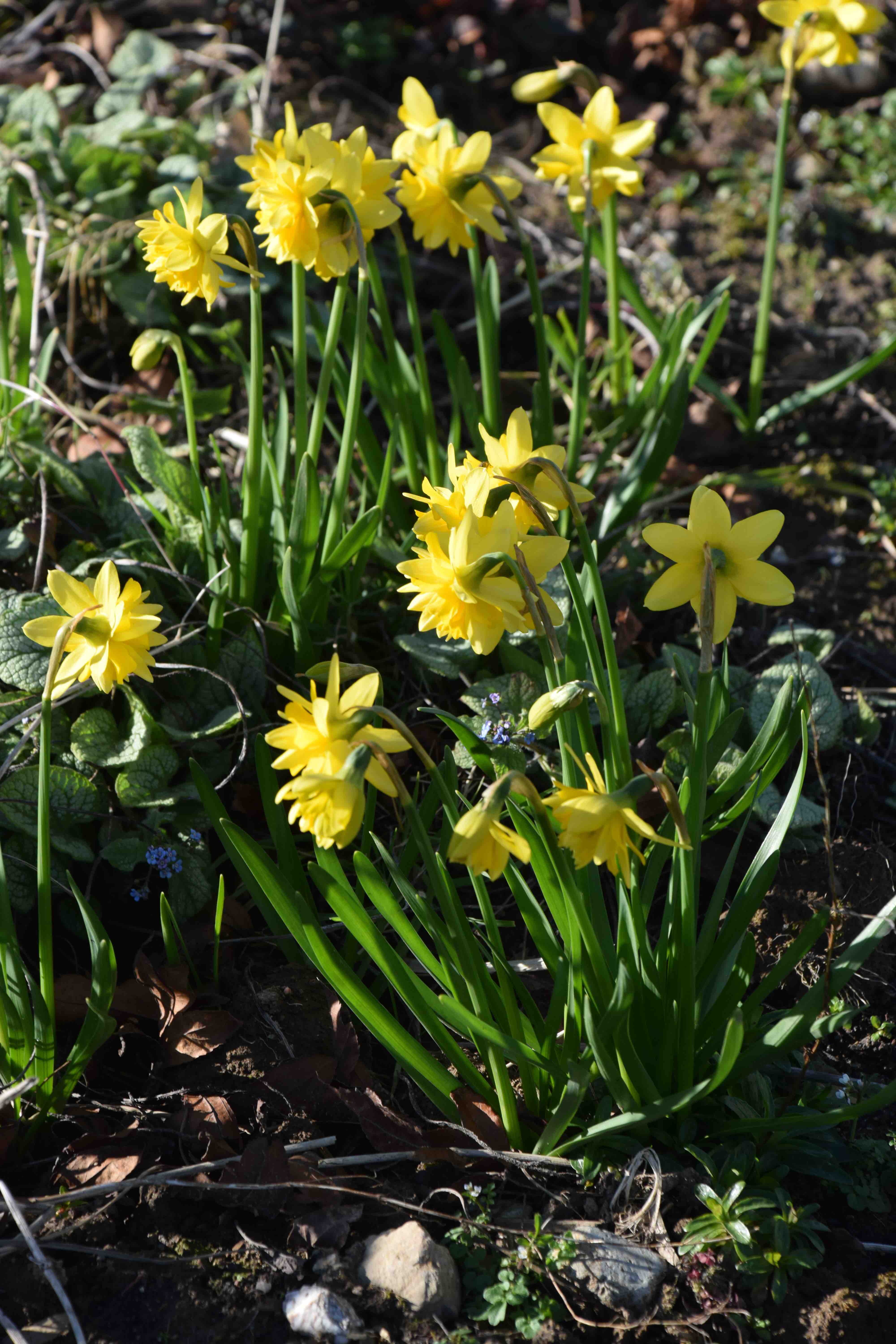
Not all daffodils are yellow and I love the ‘pink’ daffodils. Many of these open salmon pink but develop true pink colouration as they mature. Although I usually stick to yellow daffodils in grass I did plant pink and white daffodils in the grass beside my drive. They are not as bold as yellow daffs but worth a try.
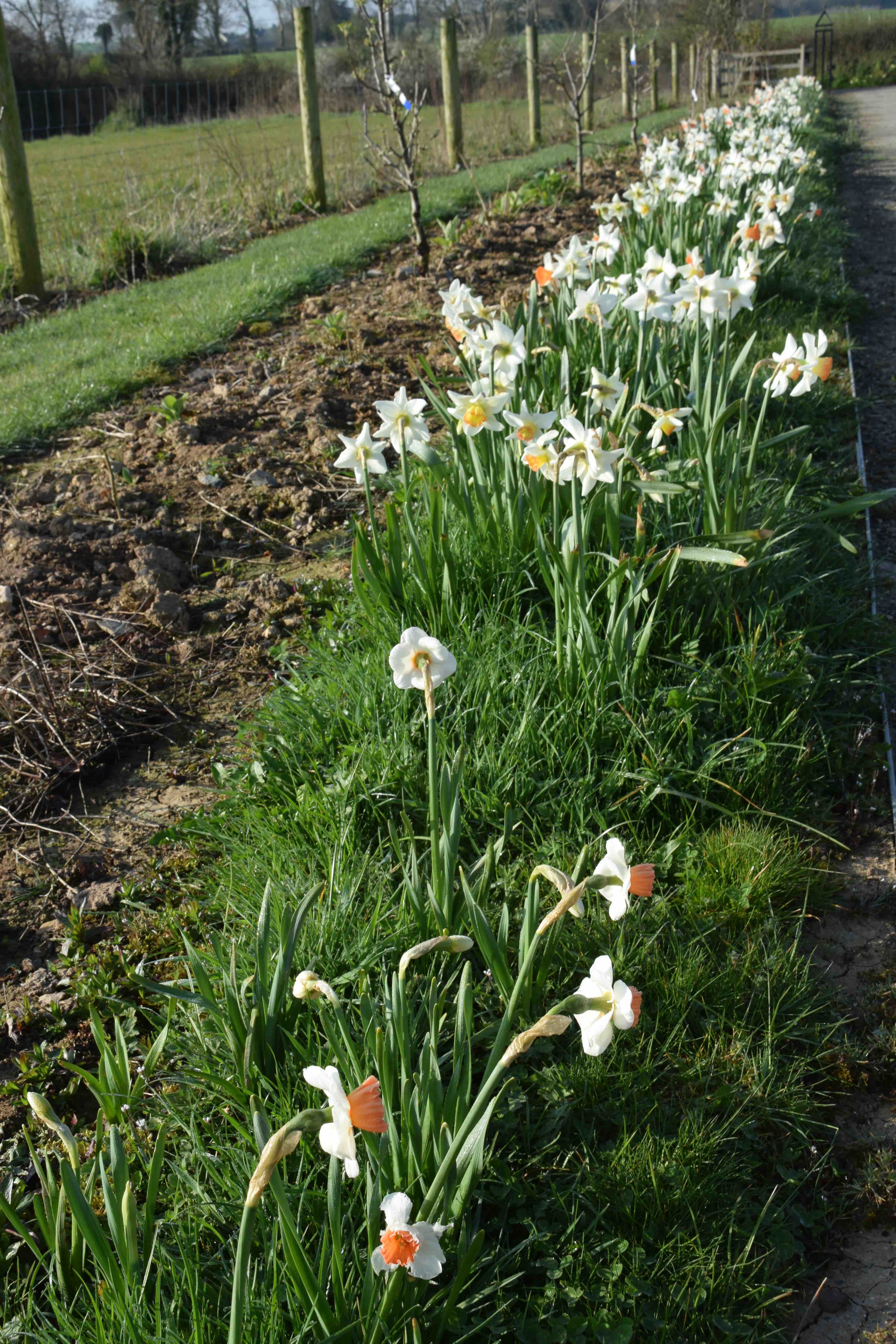
When planting in grass, either with a bulb planter or by lifting areas of turf, give them room to increase and plant them 15cm (6in) apart in drifts. In borders they can be a bit closer because it is easier to lift and divide them and in pots pack them in so you get a good show in the first year.
Remember that daffodil flowers tend to all face one way, especially if planted against a wall or fence or a background of shrubs.
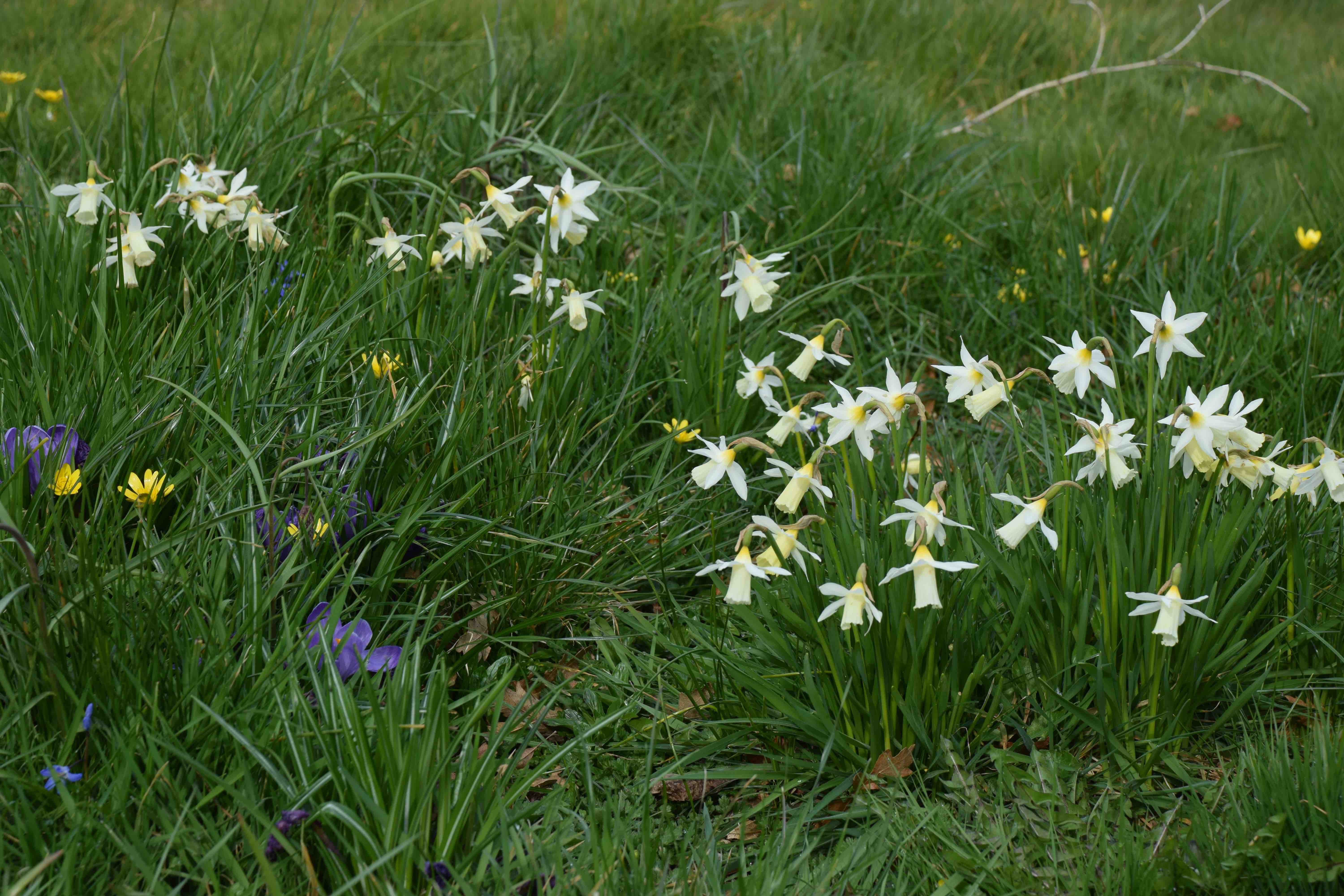
Weekly reminders
Bring in any houseplants that have been outside in summer but check them for slugs and snails first
Apply nematodes to lawns to prevent damage from leatherjackets
Last chance to trim hedges including evergreens and conifers
Sow hardy annuals in bare spots in the border for colour next summer
Sow broad beans and plant autumn onions